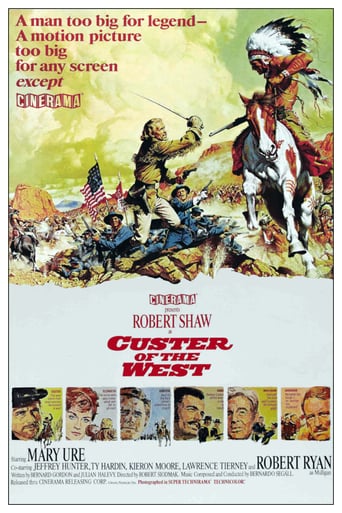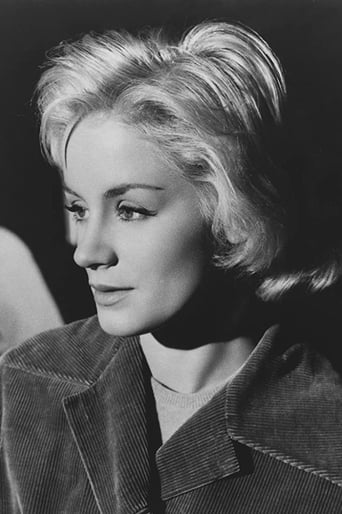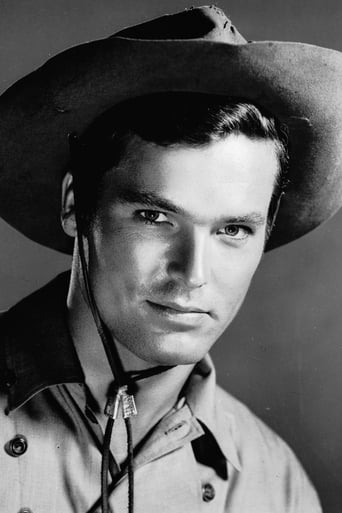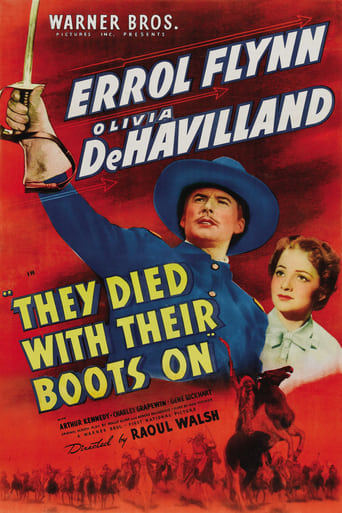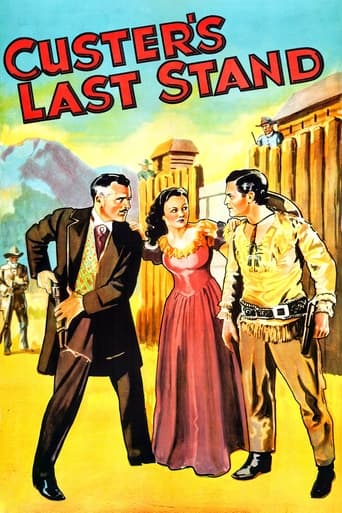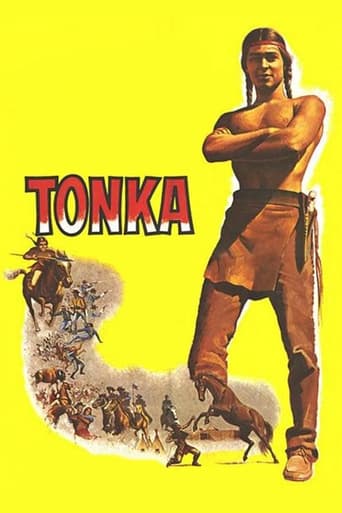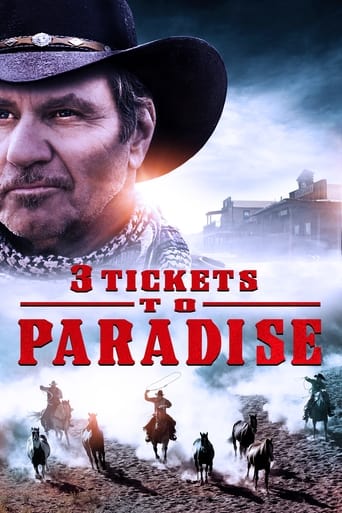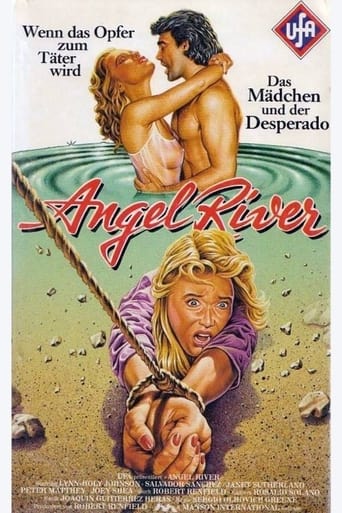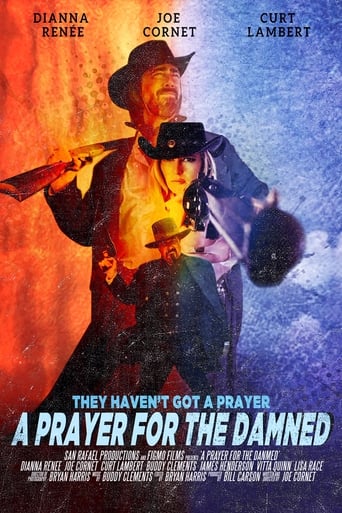Custer of the West (1968)
Biopic of General George Armstrong Custer from his rise to prominence in the Civil War through to his "last stand" at the Battle of the Little Big Horn.
Watch Trailer
Cast
Similar titles
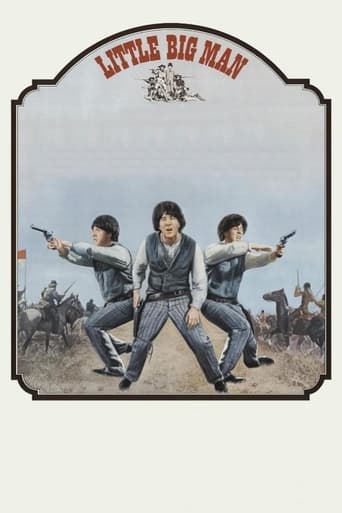
Reviews
Simply A Masterpiece
Although it has its amusing moments, in eneral the plot does not convince.
I wanted to like it more than I actually did... But much of the humor totally escaped me and I walked out only mildly impressed.
It's an amazing and heartbreaking story.
RELEASED IN 1967 and directed by Robert Siodmak, "Custer of the West" is a French/Spanish/American production starring Robert Shaw as the titular hero who becomes the youngest general in the Civil War at 23 and then goes on to fight in the Indian Wars of the northern plains, eventually dying at the Battle of Little Bighorn at the age of 36. Mary Ure plays Custer's wife while Ty Hardin and Jeffrey Hunter play his subordinates Major Reno and Capt. Benteen. Lawrence Tierney is on hand as Gen. Sheridan."Custer of the West" both stresses the mistreatment of the plain's Indians by the U.S. and portrays Custer as a tragic American hero who was a puppet of government policy. The film is usually lambasted for its inaccuracies, particularly its depiction of the closing battle. For instance, in real-life Custer's soldiers surprised the Native encampment, they didn't ride up and dialogue with the waiting Indians; moreover, the battle was a chaotic one, moving toward Last Stand Hill. Yet it's not like previous films were any more accurate, e.g. "They Died with Their Boots On" (1941), but audiences apparently demanded more accuracy by the late 60s.Regardless, the gist of events is true: Reno and Benteen were real-life subordinate officers at odds with Custer and reportedly failed him on the day of battle, although they supposedly had justified cause. If I were Benteen, I would've probably done what he did in the face of Custer's glory-hound rashness and a formidable foe: Dig in, face the enemy, and survive to fight another day. In any case, if you want historical accuracy (to a point) see "Son of the Morning Star" (1991).The main problem I have with this movie are the Spanish locations substituting for Virginia, the Dakotas and Montana. Fortunately, the creators at least tried to find a setting with trees for Virginia and some of the locations they used for Dakota/Montana occasionally work (just occasionally). But there's a long desert sequence when nothing of the sort exists in the region. You'd have to go far south to New Mexico/Arizona or way further west to eastern Washington to find such deserts. Yet it could be argued that the desert sequence is substituting for the Badlands of the Western Dakotas, which is certainly desert-like.If you can ignore the disingenuous topographies, there's a lot to appreciate in "Custer of the West." But the film's overlong and bogged down by tedious or useless sequences, like the capture/imprisonment of Sgt. Mulligan (Robert Ryan). But there are some gems, like when Dull Knife (Kieron Moore) pays Custer a visit at the fort (which in real life didn't have a timber stockade). Custer bluntly conveys to the Chief the simple (awful) truth about conquerors and those they conquer: "The problem is precisely the same as when you Cheyenne decided to take another tribe's hunting ground. You didn't ask them about their rights. You didn't care if they had been there a thousand years. You just had more men and more horses. You destroyed them in battle. You took what you wanted and, right or wrong, for better or worse, that is the way things seem to get done. That's history."FYI: Deviating from the original script, Robert Shaw made the character of Custer over to suit himself, turning him into a "sadist of Shakespearean depth." He also directed the battle scenes with Siodmak staging everything else.THE MOVIE RUNS 2 hours 21 minutes and was mostly shot 30 miles from Madrid, Spain, except for the Battle of Little Bighorn which was filmed in Costa del Sol near Almira. WRITERS: Bernard Gordon and Julian Zimet with additional work by Shaw.GRADE: C
I really was not sure whether to watch this one. Robert Shaw has never really impressed me as an actor (with the exception of The Sting) and was not totally convinced that he could pull of the role of Custer.Five minutes in however and I knew I was wrong. Although still a bit "wooden", I felt that this was part of the part he was playing instead of his shortcomings in acting talent and could see (in a totally heterosexual way) that Robert Shaw actually made a very beautiful looking Custer.However that may well part of the problem of this film. Whilst it touched on the character traits that many of us know about with Custer, this was pretty much a hero worship film.It was also of its time with many "nods" to what was happening in Vietnam at the time and sadly this somehow degenerates by using some of the terms prevalent at that time "The old good Indian is a dead Indian" (replace Indian with "Commie" for 60s update), "bleeding heart liberals" (did they REALLY use this phrase in 1865? Did they REALLY?)Mary Ure as Custer's wife Libby is just as gorgeous as Robert Shaw but woefully underused but I guess this is a film about her husband after all! As for the historically accuracy, I am no scholar of the US Civil War but what I do know of the Battle Of Little Big Horn, Benteen and Reno etc this is way-off. I don't think it is a spoiler to say that Custer still dies at the end at Little Big Horn but that is about as close to the truth as it gets and even someone who knows NOTHING about how he died will find the final scenes at LBH just a touch over the top.There are also some REALLY annoying goofs, why did the stars and stripes have 44 stars on it in 1863 but by 1865 this was down to 35 (the correct number)? However this was still 35 on the flag at the battle of Little big Horn (when there would have been 37 had they taken "full" flag at all into battle)! As a Brit this annoys me but to any American (whose flag is often so important) seems like a real insult.There is also no mention of Custer's brothers who also died at the battle and the film certainly bends/merges the truth around the actions of Benteen and Reno.Overall if you can forgive the hero worship of Custer and lack of any real history it's an enjoyable film. It could benefit from some more stringent editing by about 40 minutes but preferably by someone other than Peter Parasheles or Maurice Rootes whose efforts on the rest of the film look like they were wearing boxing gloves at the time!
SPOILER: Sorry, that should read *MINUS SEVERAL STARS* but they don't give me that option.I detest Custer and all he did post-Civil War. I'll start with that. I've been to the Custer Battlefield near Garryowen at least twice and feel that it is Holy Ground ... but not owing to the 7th Cavalry. Here ended the career of the man who would have been President, had his ambitions come to fruition. He would have also been remembered as the American Hitler.I've read historical accounts and military histories of the battle, National Geographic articles on the fascinating forensic examination archaeologists were able to make of the battlefield after grass fires swept away much of the overgrowth. And I've always been fond of saying that I can't watch him die on film enough times.((When he finally sent for Benteen and Reno, he had already charged into the trap: his message was (in part) "Bring rounds! P.S. BRING ROUNDS!" They were similarly ensnared in well-planned traps and could do little to help, however, not sitting on their hands protesting their sobriety in the shade of pleasant riverbank trees, let alone to each other: they were not together.)) Well, I just checked this stinker out from the local library, and I take my fond saying back. I've just seen him die one too many times. Or more accurately, I've seen *somebody* flog himself around on screen and *claim* to be Custer. I have no idea where he's flogging around, it certainly doesn't look like the Custer Battlefield -- not even remotely.Benteen is played in one of the worst performances I've ever seen from late and talented Jeffrey Hunter as a simultaneously wooden and spineless gopher; Reno as an incompetent and insubordinate drunken lout. The families of these competent (but overwhelmed) heroic officers should have legal recourse to sue director Siodmak for their portrayals in this travesty.Historically, geographically, politically, this movie crosses the line from "creative interpretation" to blatant twisting and reversal of anything resembling facts. Even Custer's portrayal in the wonderful farce, "Little Big Man", came much closer to the truth, and the California terrain that stood in for the Little Big Horn region in an old B&W "Twilight Zone" time-travel episode was more accurate than this.The whole film seems to have been concocted to give the Cinerama audiences a few roller-coaster moments (a runaway wagon ride, a log flume ride, there were a few forgettable others) and even these went on *long* after they'd already proved their point.A truly awful film. I'm taking it back to the library tomorrow first thing: it's drawing too many flies. I also want my 2 hours and 21 minutes back.
Handsome but dull western (courtesy of Spanish landscapes) to depict Custer on a mission to steal land from the Indians. A blond ROBERT SHAW looks convincing enough on horseback but something about his accent seems wrong and charisma is lacking. The Indians look more European than like American Indians and too many of the action scenes are slow paced and repetitive as Custer and his men go on various missions.MARY URE as his wife, Libby, has little to do but register impatience with being kept in the background between battles with long waits before she shares the screen with real-life hubby, ROBERT SHAW. A more mature looking JEFFREY HUNTER (sporting gray hairs) is Will Benteen, one of Custer's more loyal officers.The mountainous plains in Spain are no substitute for our standard glimpses of John Ford territory with not a single shot looking as though photographed in the American West. But it's the dull storyline that defeats the movie from ever becoming anything more than a series of handsomely photographed outdoor sequences. A surprise Indian attack by the Cheyennes on an Indepdence Day Celebration is one of the more colorful moments and triggers Custer's determination to fight the redskins, no matter that they greatly outnumber his men.Nothing in Shaw's performance suggests the color and vigor of Custer's bigger than life personality nor does the screenplay do any real justice to the man or the myth. As storytelling goes, the first half of the film manages to be just plain dull and the film only picks up speed as it nears the climactic fight at Little Big Horn.Battle skirmishes with Indians are, on the whole, well staged and full of furious gunsmoke and flying arrows--but the big set piece is saved, of course, for the finale which comes too late to save the first half of the film from the doldrums. One is left with the impression that some inventive fictionalizing would have helped (as it did with THEY DIED WITH THEIR BOOTS ON).Summing up: A very miscast Shaw plays Custer as a snarling villain who barks orders and the story has a plodding script. Could have been much more impressive if filmed in the U.S. on more realistic locales with more accurate casting. A cameo by ROBERT RYAN is no help at all.
